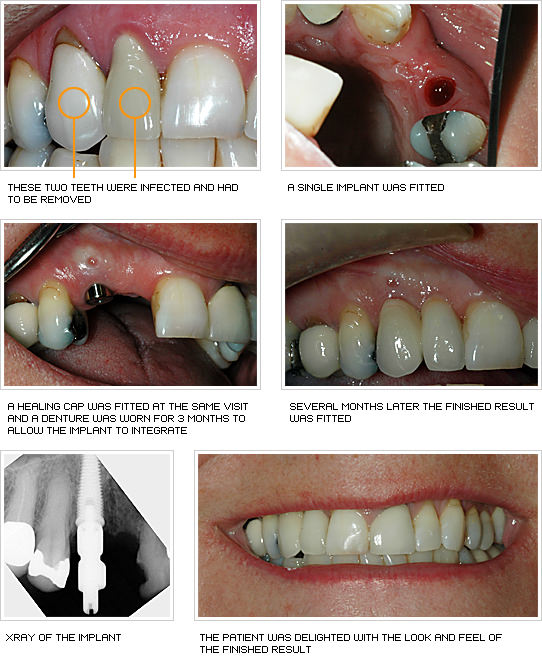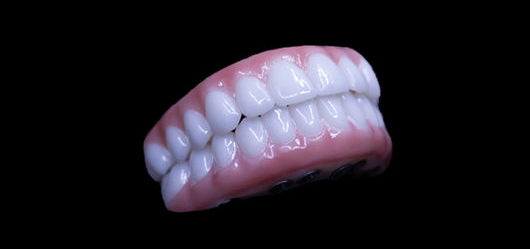Some Of Dental Sense
Some Of Dental Sense
Blog Article
Get This Report on Dental Sense
Table of ContentsThe Basic Principles Of Dental Sense Fascination About Dental SenseAll about Dental SenseSome Ideas on Dental Sense You Should Know
are clinical tools operatively dental implanted right into the jaw to restore an individual's capability to chew or their appearance. They give assistance for synthetic (fake) teeth, such as crowns, bridges, or dentures. When a tooth is lost because of injury or condition, a person can experience complications such as rapid bone loss, defective speech, or adjustments to eating patterns that lead to discomfort.Dental implant systems contain an oral implant body and oral implant joint and may additionally consist of a joint fixation screw. Same day dental implants. The oral implant body is surgically inserted in the jawbone in location of the tooth's origin. The oral implant abutment is usually attached to the implant body by the joint addiction screw and extends through periodontals right into the mouth to sustain the connected fabricated teeth
(https://sitereport.netcraft.com/?url=https://nearme.vip)Framework of The Oral Implant System choosing oral implants, speak with your dental copyright regarding the possible benefits and dangers, and whether you are a prospect for the procedure. Things to take into consideration: Your total health and wellness is an important consider identifying whether you are a great candidate for oral implants, how much time it will require to recover, and just how long the implant might remain in place.
Smoking cigarettes might affect the healing process and decrease the long-lasting success of the implant. The recovery process for the dental implant body may take several months or longer, throughout which time you commonly have a temporary joint in area of the tooth. the dental implant treatment: Carefully comply with the oral health instructions provided to you by your dental copyright.
About Dental Sense
Implant failure can lead to the requirement for an additional operation to fix or replace the implant system. Recovers the ability to eat Brings back cosmetic appearance Helps keep the jawbone from shrinking as a result of bone loss Maintains the health and wellness of the surrounding bone and gums Assists maintain nearby (close-by) teeth steady Enhances high quality of life Damages to surrounding all-natural teeth during dental implant positioning Injury to the surrounding tissues throughout surgical procedure, such as sinus opening Injury throughout surgical procedure (for instance, crack of bordering jawbone) Poor function, such as feeling like the teeth do not attack with each other generally An experience that the tooth hangs or twisting in position arising from an abutment screw loosening Implant body failing (looseness of the dental implant body) as a result of systemic infection, which may be more probable in clients with unrestrained diabetes mellitus due to neighborhood infection in bone and gum tissues sustaining the dental implant body due to delayed recovery, which might be most likely in patients who smoke Problem cleaning up the gum tissues around the dental implant, leading to poor oral health Without treatment gum condition Post-surgical numbness as a result of nerve impingement or damages Constantly alert healthcare companies and imaging technicians that you have oral implants prior to any magnetic vibration imaging (MRI) or x-ray treatments.
FDA is not knowledgeable about any type of adverse events reported for MRI or x-ray treatments with dental implants. Dental implants systems are commonly made of products that comply with worldwide agreement requirements of the International Organization for Standardization (ISO) or ASTM International. These standards have details of what makes a secure product.

A dental implant is a structure that changes a missing tooth. With screw-like gadgets, the doctor inserts a dental implant right into the jawbone, and it serves as an anchor for a fabricated tooth, called a crown. A device called an abutment connects the man-made tooth to the dental implant. The crown is personalized to fit the person's mouth and match the shade of their teeth.
Facts About Dental Sense Revealed
Some individuals are not eligible for oral implant surgery. It is for dental specialists to run on individuals with: acute illnessuncontrollable metabolic diseasebone or soft tissue condition or infectionIf these concerns are fixed, an individual can have the surgical treatment. In, oral doctors abstain from operating individuals with: If people with any one of the above undertake oral implant surgical procedure, there is a greater risk of the dental implant failing.

Oral implant surgery is a customized procedure. It's not the exact same for everyone. The adhering to gives a general review of what you can expect your dental practitioner, oral specialist, periodontist or prosthodontist to do: Place the implant operatively. Provide you time to recover. Affix the Visit This Link article and last crown, bridge or denture.
Next, your doctor will very carefully position the oral implant into your jaw. If your dental implant is near the front of your mouth, your dental expert will make a short-term tooth for you to use till you heal.
Unknown Facts About Dental Sense
Your supplier can inform you what to anticipate in your scenario. Throughout the healing stage, your jawbone needs to fuse to the dental implant. This process, called osseointegration, is critical for security and long-term success. This procedure can take anywhere from three to nine months. In some cases, it may take longer.
Once your dental implant heals, your dentist can connect the joint (tiny connector article) and your last restoration (crown, bridge or denture). This usually takes about one hour to finish and may need a 2nd small surgical procedure. You should not really feel any type of pain throughout your oral implant treatment due to the fact that your supplier will certainly utilize medication to numb your gum tissues.
Report this page